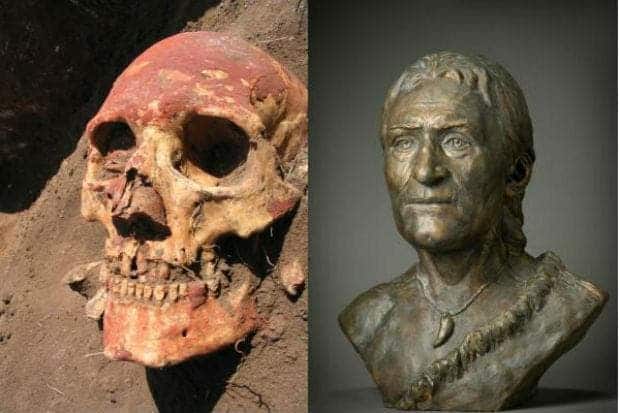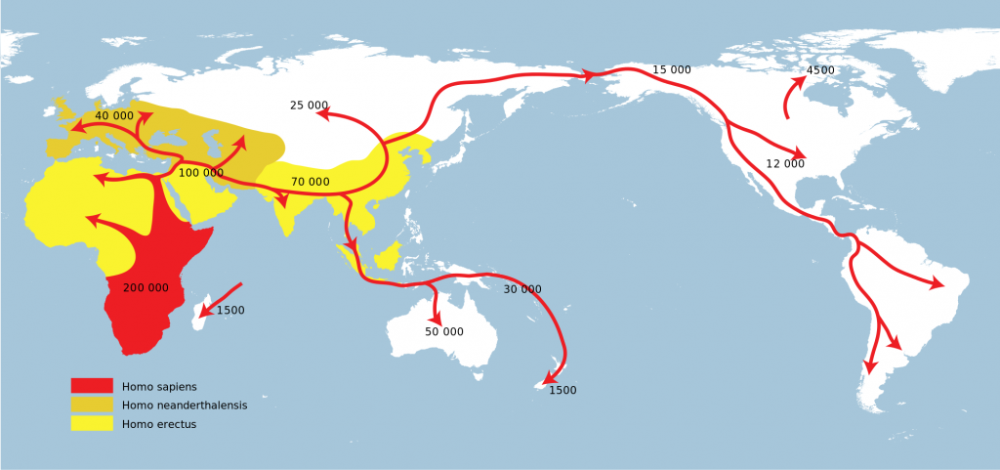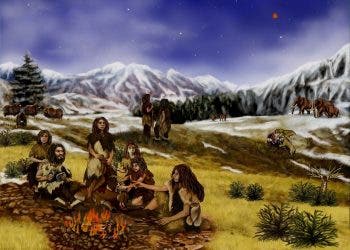It’s widely agreed that modern Europeans trace their roots from in three ancient tribes, or three important migration events, if you will. But after researchers sequenced the genomes of two hunter gatherers who lived roughly 13,000 years ago, there’s evidence that suggests a fourth tribe lent our genes.

Archaic Homo sapiens left Africa, the wellspring of humanity, some 60,000 years ago migrating North, via a route passing through today’s Egypt or through the Arabian Peninsula. Possibly both. Some 40,000 to 45,000 years ago the first hunter-gatherers arrived in pre-Ice Age Europe. Then early farmers settled around the eastern Mediterranean and Levant, where they would develop agriculture around 10,000 years ago, then expand throughout Europe. During the Bronze Age, some 5,000 years ago, there was a third wave of migration from central Eurasia into Western Europe – these were the Yamnaya people
They came on horses and brought livestock, and expanded rapidly, after staying virtually isolated for millennia in the Caucasus region, where southern Russia meets Georgia today. The DNA of several hunter gatherers living in Europe long before the Bronze Age suggests they probably had a combination of features quite striking to the modern eye, among which dark skin. The Yamnaya, however, were in fact light skinned, which is why European whites are called Caucasians, given the Yamnaya stem from the Caucasus.

What’s interesting is that a new research suggests that the Yamnaya were the product of two distinct tribes. Cambridge University, Trinity College Dublin and University College Dublin researchers sequenced DNA from samples recovered from Western Georgia burial sites – one over 13,000 years old, the other almost 10,000 years old. Apparently, half the Yamnaya ancestry can be attributed to a previously unknown and genetically distinct hunter-gatherer source. As such, when the Yamnaya came to Europe on horseback and wheeled carriages, they brought with them the genetic material of two distinct tribes.
The DNA analysis suggests this forth tribe diverged from the western hunter-gatherers just after the expansion of anatomically modern humans into Europe from Africa. At the end of the last Ice Age, some 10,000 years ago, the Caucasus hunters must have mixed with the other Yamnaya lineage once they were free to expand their reach.
“The question of where the Yamnaya come from has been something of a mystery up to now,” said one of the lead senior authors Dr Andrea Manica, from Cambridge’s Department of Zoology.
“We can now answer that as we’ve found that their genetic make-up is a mix of Eastern European hunter-gatherers and a population from this pocket of Caucasus hunter-gatherers who weathered much of the last Ice Age in apparent isolation. This Caucasus pocket is the fourth major strand of ancient European ancestry, one that we were unaware of until now,” he said
Not only did the Caucasus hunters expand west via the Yamnaya, but also east. A similar population must have migrated into South Asia at some point, says Eppie Jones, a PhD student from Trinity College who is the first author of the paper.
“India is a complete mix of Asian and European genetic components. The Caucasus hunter-gatherer ancestry is the best match we’ve found for the European genetic component found right across modern Indian populations,” Jones said. Researchers say this strand of ancestry may have flowed into the region with the bringers of Indo-Aryan languages.






